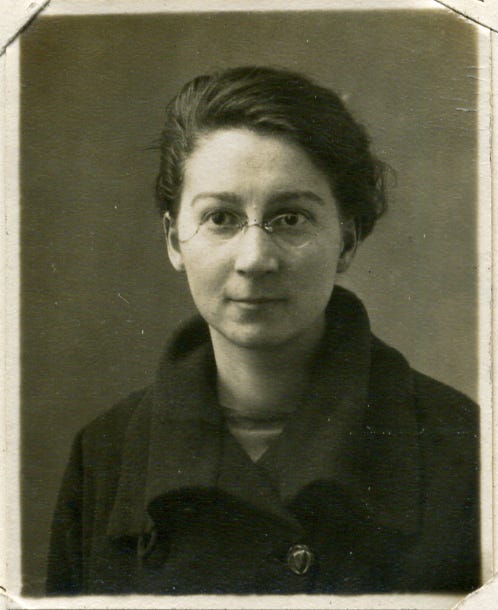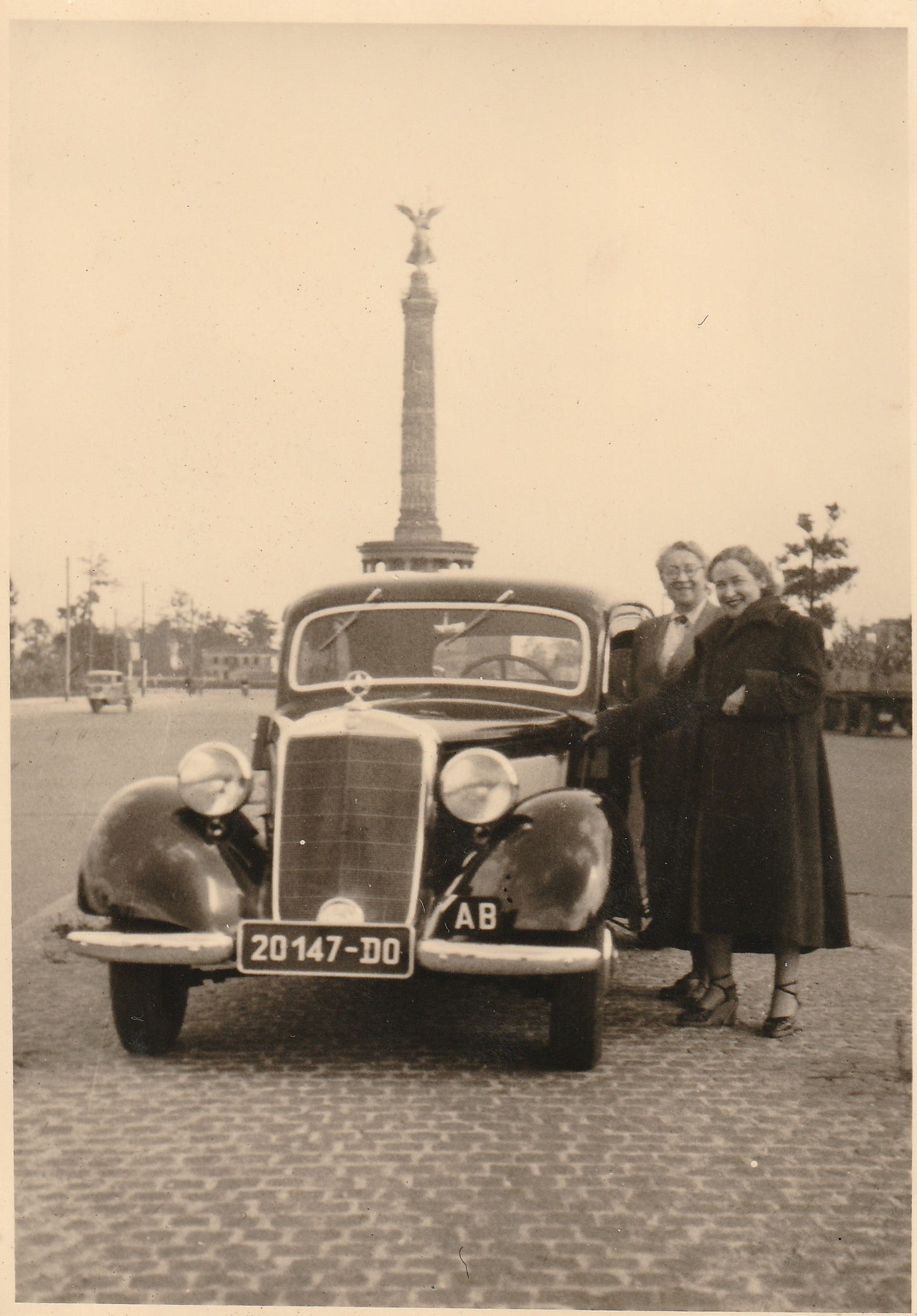
Welcome back to SOURCE NOTES. You may have heard of Michelle Young through Untapped New York, the digital publication and tour company she founded in 2009. Or perhaps her popular Lit Salon series has appeared on your radar. But Michelle is also a first-time author whose debut, THE ART SPY: The Extraordinary Untold Tale of WWII Resistance Hero Rose Valland, is the subject of this month’s column…
What’s THE ART SPY about?
It’s the true story of a World War II resistance hero, Rose Valland, who was an art historian inside the museum the Nazis took over to loot art through. Sometimes I say, she’s the spy who helped take down Hermann Göring’s art-looting ring.
You discovered Rose while researching your French in-laws’ family history?
Because of my in-laws’ history in World War II, I started devouring World War II books, and then the sub genre of female-spy World War II books. The books that really inspired me in this genre were MADAME FOURCADE’S SECRET WAR by Lynne Olson and A WOMAN OF NO IMPORTANCE by Sonia Purnell. Those two were these gripping page turners. And the book that I discovered Rose through is called GÖRING’s MAN IN PARIS by Jonathan Petropoulos, about Göring’s personal art dealer, who was an art historian in the Jeu de Paume museum where Rose worked. I dug into her and became obsessed.
When was this?
January 2021. I was pregnant at the time and super ill. I read that book over a weekend and said to a friend, I would love to write a book about her one day. And she said, you should. After my second daughter was born, late at night between feedings and stuff, I decided I would test out whether I could even write narrative nonfiction before by writing some chapters. So at first it was an experiment, and then, in early 2022, I started working on the proposal.
What was your first research stop outside of just reading about Rose?
I went to the Met Museum archives, because one of the directors of the Met was very close with Rose. I had seen there was at least one letter there. So I went to see those documents and they turned out to be quite helpful. Not just the letter, but other things. Then I went to D.C. to look at the same man’s papers, which had been donated by his family. A few weeks later I went to France. That summer in France was the bulk of the research. My husband actually came with me every day because there was so much to process. It was rather overwhelming at first—going into a new archive, not really knowing how it works. My husband helped me document things and take photographs and notes at the national archives. And then I got in touch with the Rose Valland Association, which is located in her hometown. The woman who’s the president of the association became one of my critical sources.
You write in your author’s note that Rose was a packrat.
She kept everything. If someone sent her a letter, the envelopes were inevitably still there. She kept copies of her correspondence. After her book was published, there was a point in which they were pulled off the shelves, maybe for political reasons, and she wrote to hundreds and hundreds of libraries and museums all over France, and she saved copies of those letters, carefully placed in envelopes. There were recipe books, sheet music, programs to concerts, and all of her art supplies, which I got to hold. It seemed like she didn’t want to let anything go.
What were some of the best things you found in her personal archive?
Her own paintings told me a lot about her. I found them to be very colorful, vibrant. And this kind of told me a little bit about the world she wanted to live in, maybe versus the world that she grew up in. Her medals, the Legion d’honneur, the Medal of Freedom—I got to hold those, so that was really moving. And thousands of postcards. She’s just amazing.
Her papers are scattered across different archives.
Whatever was in her office ended up in the diplomatic archives. Any documents related to her work as a curator ended up in the French museums. Sometimes you would find two pages of a report in one, and then you would find the other pages in the other. What I was told, and what’s kind of clear when you look at all the materials, is that she mixed work and life constantly. So it did take some detective work sometimes to figure out where things were. And then, all of her personal effects and things left in her apartment were with her family. When I met with the family, it’s not like everything was organized. They would like, leave the house, go somewhere, and bring stuff back. It was difficult to understand the full breadth of what they had.
Tell me about some of the previously unpublished material you uncovered.
There are two big discoveries in the book. One is her relationship with her partner, Joyce Heer, a British citizen who was half German. There just wasn’t a lot known about her. I did research in America to figure out who she was, because she worked for the U.S. Embassy. But the letters—well, Rose wrote a letter after Joyce’s death, and it was very emotional. It talked about the fifty years they lived together. And this to me was a very important letter, because there has been doubt as to whether she was gay. There’s been confusion and just not a lot of information about Joyce in general.
Where did you find the letter?
It was in the family’s file.
And what was the other of the two big discoveries?
Rose had reported on a big fire—the Nazis had burned five hundred paintings in the garden of the museum she worked in. This account had been questioned immediately after she published her memoir, and that doubt continued into the present day. I was curious why, if we trust Rose on so many other subjects, was this one story put into question? So I traced it back, and it was the Germans who were in the museum that ordered the burning, who came out after the war to say, this event never happened. And they went as far as to say, if it did happen, it wasn’t us, it was Rose.
In the diplomatic archives—once again, you might get a box, but the material in it is totally mixed up and there’s no real organization. And so, in the back of this box of unrelated material, I find these notarized testimonies, and I look at the names of who signed it, and I recognize them as the guards who were in the museum during the war. So then I start to read what they’re saying. The handwriting is difficult, and I'm like, okay, it does seem like they might be referring to this event. The dates are right. And when my husband woke up, I was like, is this what I think it is? And he confirmed that it was. This to me was a huge, huge discovery, because through it, I can correct the historical record. Furthermore, it wasn't just, oh, I was a guard there and I saw it and it’s true. These were detailed accounts that gave me so much color to be able to describe what actually happened.
What sort of material did you get from Rose’s surviving family members?
She was very close with her cousin, and so the descendants of that cousin are like, the gatekeepers. They hold the legal rights to her photographs and personal effects and such. So I met with a woman who is the granddaughter of that cousin, who talked about what she knew and how she had met her as a child. These kinds of interactions, where someone is so many generations below the accuracy of information, they’re sort of about personality. They can tell you a bit, like, how does it feel to be in a room with her? And what she told me aligned with other accounts I saw, which is that that Rose was serious, not a very easy person to spend time with, particularly, and that she was very engaged intellectually. I also spoke with the niece and nephew of Rose’s partner. So again, that was really helpful, to talk about personality and little anecdotes. One of the things they told me was that Joyce always wore high heel sandals wherever she went.
Did you visit the place where Rose lived?
She lived in the Latin Quarter, and I also lived there. I didn’t go inside her apartment, but I walked her street and walked the neighborhood and realized I had lived right near her when I was studying in Paris.
How close?
Like, a five minute walk, max.
Wow.
And I visited some of the schools she went to. But in terms of access to spaces, there’s a secondary storyline in my book about an art-dealing family in France, and their home, which was also a gallery, is now an office building. I basically emailed every business in that building to say, Hi, I’m writing this book, is there any way I can come and see the space? And one company, a transportation company, put me in touch with the guy who manages the building. And he brought me around and I was able to look at old photographs of this gallery and figure out exactly how things were laid out and how things had changed. You know, the spiral staircase is still there. The room they used for the gallery with its paneled walls and skylight is still there. So that was amazing.
As someone who started out never having done any research or storytelling like this, do you feel like you’re hooked?
I’m definitely hooked.
Are you working on another project?
I can't say too much about it, but I’m thinking maybe I’ll go into the modern day. Originally I thought I would do another World War II book because I found so many other great stories while researching this book. But I’m thinking I want to explore something that’s closer to present day America, and then hop back again. I’m not done with World War II yet.







